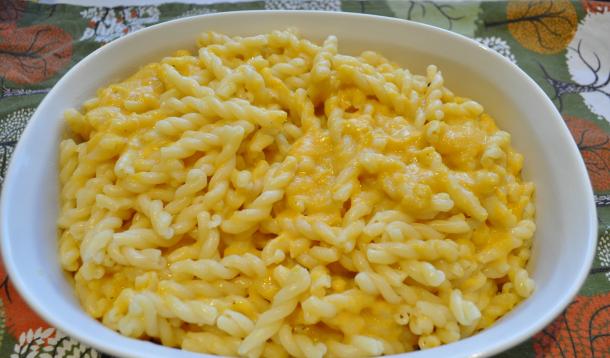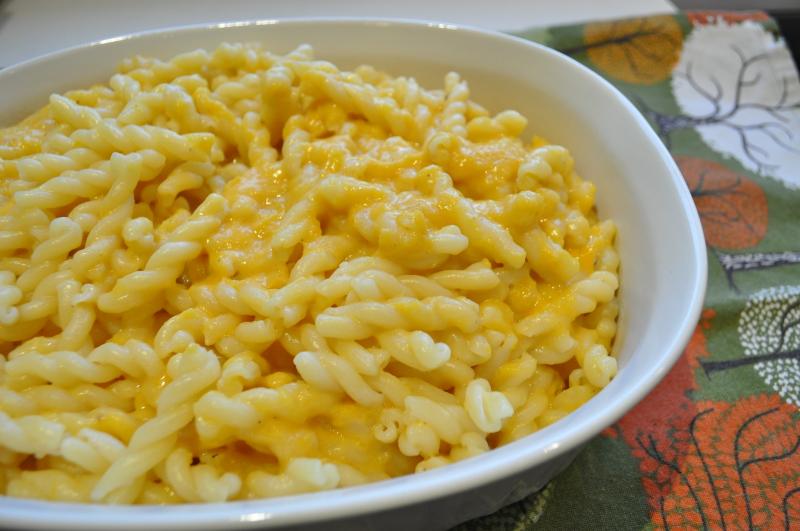
If you spend any time at all reading mommy blogs, scouring Pinterest for kid-friendly recipe ideas, or reading up about how to deal with your picky eater, you've probably noticed that there is lots of buzz around certain feeding trends such as introducing solids via "baby-led weaning," making absolutely everything in a muffin tin, and letting go of some old-school feeding techniques such as the "3 more bites" rule.
Being a mom to three, a registered dietitian, and kids nutrition blogger, I'm able to stay on top of the trends and guide parents in terms of what to follow, what to forget, and how to navigate the confusing and evolving world of kids nutrition and feeding.
Here's a list of the top feeding and kids nutrition trends to follow in 2016:
Gone are the days where parents micro-manage their kids and demand that they "clean their plates" or "have three more bites of broccoli" -- that is considered old-school now, and as we now know, can perpetuate picky eating in kids and even spur on unhealthy eating habits later in life. Thankfully, the trend is leaning more towards parents taking the pressure off and allowing their kids to be in charge of whether and how much they eat at mealtimes.
As a Dietitian who's passionate about teaching kids to eat mindfully, this trend is one of my favourites, and I've been encouraging parents to feed this way for years. Having three kids myself, I know just how hard is is to back off at mealtimes and let my kids decide what and how much they eat, but I also know that this way of feeding has a big pay-off. It allows kids to follow and trust their natural hunger cues, which increases the likelihood that they'll do the same as adults, decreasing the chances of disordered eating patterns and weight issues later in life. As important as letting our kids control the "if's" and "how much's" of eating at meals, it's also important to set some healthy mealtime boundaries and continue to be in charge of what, where and when food is served (this is the responsibility of the parent).
The concept of "family-style" eating has been around for a long time, but is now becoming more popular with families with toddlers and young kids, which I'm thrilled about. Not only does this feeding style encourage the whole family to eat together (which has plenty of benefits), but it also allows kids to explore different foods at their own pace (which aligns with Ellyn Satter's philosophy of the Division of Responsibility of Feeding) and takes the pressure off parents to make sure their kids eat certain foods like vegetables.
As long as there is a variety of foods served at mealtime, kids can be free to choose which foods they want on their plate (and with help from parents, serve up themselves) and how much of each. We often serve "family-style" in our house, where I lay out all of the fixings and let the kids go to town (such as a yogurt parfait or taco salad). We've found that it's widened both of our kids' palates simply because they feel as though they have a bit of control, and perhaps because they feel less pressure to eat certain foods (therefore are more open to trying them). As Registered Dietitian Katie Serbinski of Mom to Mom Nutrition explains in her blog post, it also gives parents the opportunity to model healthy eating habits (by eating a variety themselves), which is a very powerful way to encourage balanced eating in children.
Along with Omega-3 and Vitamin D, supplementing kids' diets with probiotics is now becoming more commonplace. Probiotics are healthy bacteria that are either in supplement form (in a capsule) or added into certain foods like yogurt. These beneficial bacteria help to create a healthier balance of bacteria in the gut which can help to improve health. There are many potential benefits to adding probiotics to our kids' diets such as decreasing the severity and duration of diarrhea cause by gastroenteritis, preventing antibiotic-induced diarrhea, easing colic in babies, and boosting immunity, especially with upper respiratory tract infections.
Probiotics can be found in foods such as yogurt, but many parents (including myself and several of my dietitian colleagues) are now choosing to give their kids probiotic supplements, especially during cold and flu season. There are many brands and strains of probiotic that can be found at the pharmacy these days (which can leave parents confused). My recommendation is to make sure that the probiotic is meant specifically for kids (this means it's usually chewable or in a drink form), that it's government regulated (has an NPN number somewhere on the bottle) and that it's meant to be refrigerated. Make sure to read the instructions regarding how much to give your kids and pay attention to the expiry date. Some experts say that a multi-strain probiotic (at least 3 different strains of probiotic) is more beneficial that a single strain (such as ONLY lactobacillus acidophilus). Our favourite brands are Biogaia (for our baby) and Renew Life's FloraBear for our older kids. If you prefer a drink, BioK is an option.
Parent's are starting to grow tired of cooking separate meals for their fussy kids, and are choosing to serve one--and only one--meal for everyone in the family. Thank goodness for this trend. Not only do parents not have the time to play "short-order cook," but they are now learning that making separate meals for picky eaters actually encourages more picky eating, narrows their palates, and discourages exploration of new and unfamiliar foods. As mentioned earlier, setting healthy mealtime boundaries (such as parents deciding what is served at mealtime), is key to setting kids up for nutritional success. Unless a child is an extremely picky eater with growth or nutritional status concerns, parents are encouraged to serve the same meal to every family member, making sure to include one or two foods that everyone likes.
Serving up French toast or whole grain pancakes with yogurt and fruit is no longer only reserved for breakfast--these foods can be served for any meal and kids LOVE them. Not only are breakfast foods a hit with most kids, but these meals tend to be easy and quick to prepare. We often make a big veggie frittatta for dinner or have "egg-in-the-hole" with veggie sticks for lunch.
Skipping purees and jumping right to soft finger foods is becoming more and more popular for parents of babies. There are many benefits to introducing solids this way, such as the fact that it allows babies to eat as much or as little as they want, at the pace that they want. It can also help babies develop their fine motor skills quicker and can be much easier for parents, who can simply feed baby what the rest of the family is eating. Feeding pureed foods, however, is still a fine option for parents who aren't comfortable offering their babies finger foods right off the bat. What's important is that babies lead either way--if you are spoon feeding, make sure that you follow your baby's cues (when she opens her mouth, offer a spoonful and when she turns away or doesn't open her mouth, stop). This will ensure that baby continues to eat according to her hunger cues first and foremost as she grows.
Whether it's a mini frittata, oatmeal to-go, individual mac n cheese cups, muffin-cup desserts, or mini meatloaves cooking in muffin-tins is all the rage. Not only are these meals easy to make, but they're also fun to eat. and perfect for on-the-go snacks or packed lunches! Try these yummy recipes:
Flourless Peanut Butter and Banana "Muffins"
Whole Grain Muffin-tin Pizza Rolls
Baby-friendly carrot and zucchini mini muffins
Although sippy cups are convenient for parents (they prevent spills and travel well), we are now learning that they may not be the best choice for babies and toddlers. As I explain in my Today's Parent article on sippy cups "children use an immature, infant-like sucking motion when drinking from a sippy cup, and the spout prevents the front of the tongue from elevating during swallowing. Using sippy cups multiple times a day and for an extended period of time can prevent a child from developing the independent lip, jaw and tongue movements needed for successfully drinking from a regular open cup at an appropriate age (around one year). What’s more, the spout of most sippy cups is similar to a baby’s bottle and can easily become a pacifier or source of comfort for a toddler." Sippy cups are also often the vehicle for sugary drinks such as milk and juice, and if offered regularly to a baby or toddler, can cause dental carries.
Using sippy cups for water when on-the-go, or occasionally for milk or water at a meal should be fine, however according to Health Canada's new infant feeding guidelines, open cups should be introduced right at six months of age (with help from mom or dad) to help develop baby's drinking skills and oral-motor development.
For more on kids nutrition, picky eating, easy meal options and more, check out my Facebook page!
It's a week after Christmas and we're still beaming with holiday spirit so things have been a little chaotic around our house. The kids are jacked up on sugar almost all of the time it seems with all the holiday get-togethers and parties, which means that they are bouncing off the walls and not listening very well. We've all been indulging in delicious, rich holiday foods lately (which is all part of the fun), but this morning I felt like we all needed a satisfying and nutritious breakfast that wouldn't shoot our blood sugar levels to the moon and back, but still tasted like Christmas. I decided on our old standby- steel cut oats. But, decided to add a little holiday cheer by mixing in some eggnog (I use light because I don't notice the difference), some spiced nuts and dried cranberries. It was as easy as making regular steel cut oats, yet tasted deliciously gourmet. Oats are our go-to breakfast for many reasons, including the fact that they are super versatile, you can make a huge batch for the whole week, and they are chock full of nutrition. The soluble fibre in oats helps to keep blood sugar levels stable and steady, while keeping tummies fuller longer.
Makes 5-6 servings
Ingredients
Directions
 Cook oats according to package instructions on stove top, and then cook a little longer
Cook oats according to package instructions on stove top, and then cook a little longer
 Once the oats become slightly dry, add eggnog, sugar and nutmeg in and stir well. Add enough eggnog to produce a creamy oatmeal (I didn't measure as I was adding it in, but my guess is about 3/4 cup)
Once the oats become slightly dry, add eggnog, sugar and nutmeg in and stir well. Add enough eggnog to produce a creamy oatmeal (I didn't measure as I was adding it in, but my guess is about 3/4 cup)
 Serve oatmeal while warm, and sprinkle with spiced nuts (here's a great recipe) and dried cranberries. Top with an extra drizzle of eggnog. Enjoy!
Serve oatmeal while warm, and sprinkle with spiced nuts (here's a great recipe) and dried cranberries. Top with an extra drizzle of eggnog. Enjoy!
I also post easy recipes and nutrition tips for families daily over on my Facebook page!
![]() Put down your battle forks! Avoid mealtime battles with your kids over the holiday season.
Put down your battle forks! Avoid mealtime battles with your kids over the holiday season.

Mac and cheese is one if my all time favourite comfort-foods, especially when it's cold outside. But the health-nut in me is always on the look-out for healthier-yet-still-delicious versions of the classic, so when a friend mentioned that she had tried "butternut squash mac and cheese" I was inpired to create my own squash mac and cheese recipe.
Squash is not only in-season right now, but it's also extremely nutritious and yummy. In fact, squash is loaded full of vitamins, minerals, and antioxidants as well as fibre which are all important for proper health. Squash has a naturally sweet taste and soft texture, which makes it appealing to kids and adults who aren't particularly fond of most bitter-tasting vegetables.
My favourite variety is acorn squash, roasted in the oven with some olive oil and garlic, so we often seem to have leftovers in the fridge around this time of year. Although I don't ever hide the fact that I'm adding vegetables into dishes like mac and cheese, soups or casseroles, no one in my family guessed that there was squash in this recipe until I told them. It was a hit and we've served it several times since. My husband--the one who loves kraft dinner more than anything--even raves about it.
Ingredients
* To roast the acorn squash, cut it in half, scoop out the middle (seeds etc.) and discard, drizzle olive oil on top and sprinkle with salt, pepper and garlic powder. Roast in oven at 400 degrees for 40-50 minutes, or until golden brown on top and flesh is soft and easy to scoop out
Directions
 In a large stock pot over medium heat, combine the roasted squash, butter, chicken broth, milk, garlic powder, dry mustard, and pepper. Stir constantly while heating (for approx. 5-10 minutes).
In a large stock pot over medium heat, combine the roasted squash, butter, chicken broth, milk, garlic powder, dry mustard, and pepper. Stir constantly while heating (for approx. 5-10 minutes).
 Remove from heat and blend all of the ingredients by either transfering to a blender or food processor and blending until smooth, or using an immersion hand-held blender and blending right in the pot until smooth. Once blended, add the sauce back into the pot, and slowly add the cheese, mixing constantly until all of the cheese is melted.
Remove from heat and blend all of the ingredients by either transfering to a blender or food processor and blending until smooth, or using an immersion hand-held blender and blending right in the pot until smooth. Once blended, add the sauce back into the pot, and slowly add the cheese, mixing constantly until all of the cheese is melted.
 Add cooked pasta and gently stir until coated with the sauce. Transfer macaroni and cheese into a large serving dish and allow to cool for a few minutes prior to serving.
Add cooked pasta and gently stir until coated with the sauce. Transfer macaroni and cheese into a large serving dish and allow to cool for a few minutes prior to serving.

For more easy kid-friendly recipes (along with lots of tips and tricks on feeding kids and picky eaters), visit my Facebook page!